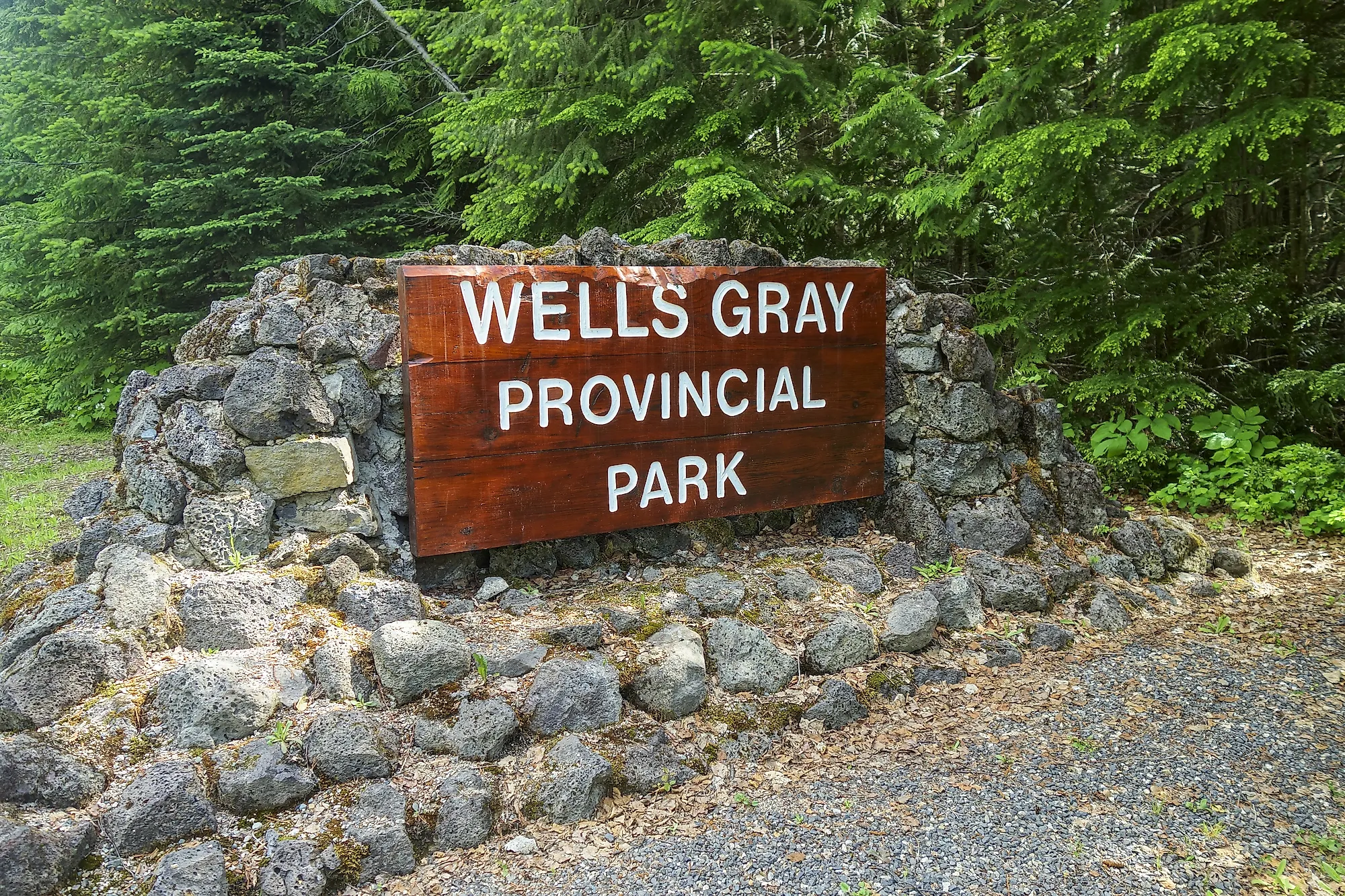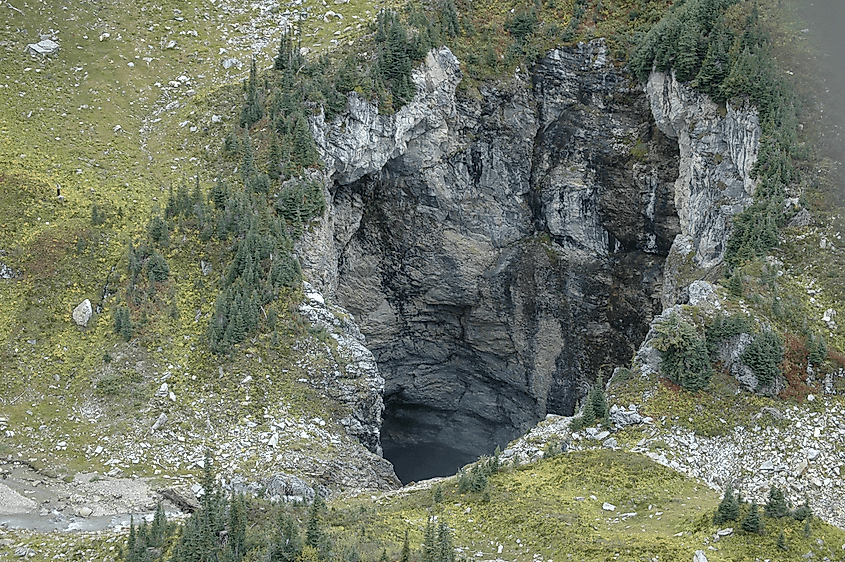
Wells Gray Park Cave Discovery
The Wells Gray Park Cave discovery was the discovery of a karst cave in the remote area of British Columbia’s Wells Gray Provincial Park in 2018. The cave, believed to have the largest entrance in Canada, was discovered by wildlife biologists surveying the caribou population in the area. Although the Canadian government is yet to designate the cave an official name, it is unofficially called the Sarlacc’s Pit. The large cave was hidden for years because of the ice that filled it and the snow that covered the surrounding area. Scientists believe the Wells Gray Park cave discovery is proof of the effects of climate change on the planet.
Discovery Of Wells Gray Park Cave

Although scientists do not know how long the newly discovered Wells Gray Park cave has existed, it may be hundreds of years old. The cave was discovered in 2018 by chance by a group of wildlife biologists and government researchers surveying the population of mountain caribou. Ken Lancour, the helicopter’s pilot, first sighted the cave. He spotted a snow-filled depression at the entrance of a cave. The pilot immediately called Catherine Hickson, a Canadian geologist and volcanologist, and informed her of the cave discovery.
The team nicknamed the cave “Sarlacc’s Pit” after Sarlacc, which first appeared in the film “Return of the Jedi.” The Canadian government hopes to settle on an official name for the cave once it consults the First Nations living in the area. Although the cave is located in the provincial park, its exact location remains a secret to preserve the site. The BC government has also restricted access to the area, with trespassers fined up to $1 million or imprisoned for one year.
Why The Cave Went Undetected For Years?
The Sarlacc’s Pit is a massive ancient cave that went unnoticed for hundreds of years until 2018, when the government team stumbled on it. The cave is located in British Columbia’s rugged alpine area within the Wells Gray Provincial Park. Researchers believe this massive cave went undetected for many years because it was covered by ice and snow. According to Catherine Hickson, thick glaciers covered until the 1800s. The snow and ice steadily melted away due to the warming climate and caused the snow plug to collapse, leading to the Wells Gray Park cave discovery in 2018. According to researchers, the snow plug’s collapse was likely caused by climate change that is also responsible for the recession of glaciers in the surrounding area.
Geography Of The Wells Gray Park Cave
The cave was first explored in September 2018 by Catherine Hickson and John Pollack, who managed to descent in it partially when the snow had melted away. The two scientists estimate the cave to be over 150 meters deep and two kilometers long, making it one of the largest and deepest stripe karst caves. The cave’s entrance is 100 meters wide and 60 meters wide, making it Canada’s largest cave entrance. Measuring the cave’s exact depth has been a challenge because the river flowing into the cave forms a waterfall and sends up a lot of mist that causes poor visibility. Snow covers the cave for much of the year, making its exploration only practically possible in fall.











